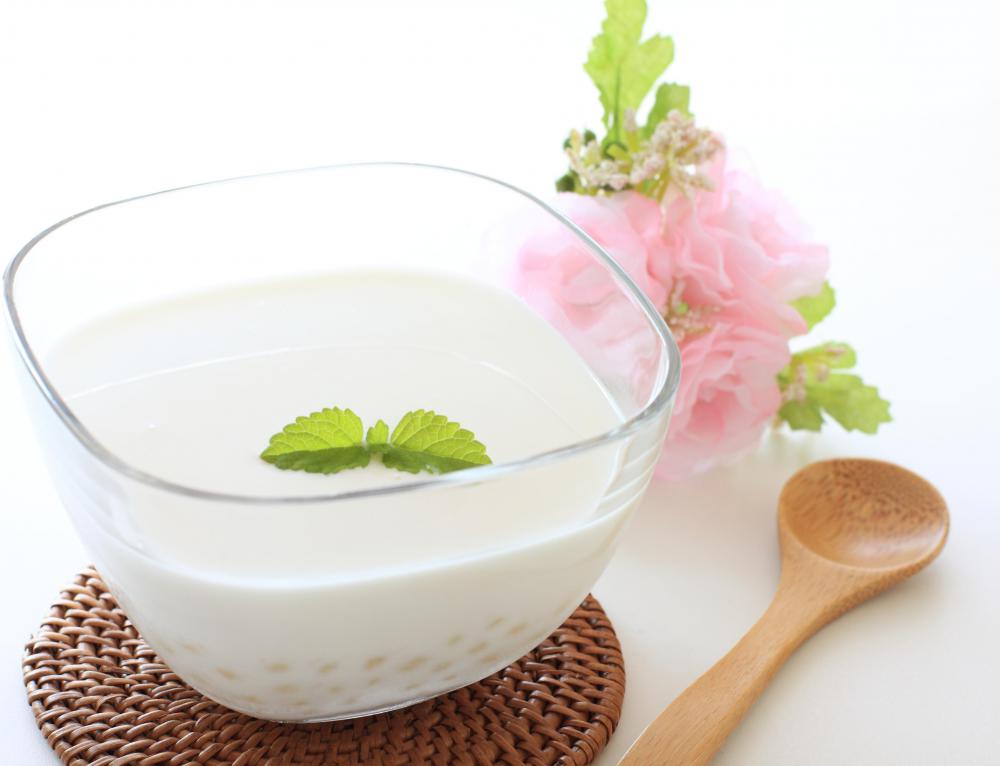At DelightedCooking, we're committed to delivering accurate, trustworthy information. Our expert-authored content is rigorously fact-checked and sourced from credible authorities. Discover how we uphold the highest standards in providing you with reliable knowledge.
What is Pearl Tapioca?
Pearl tapioca is a starchy food made from the root of Manihot esculenta, commonly called cassava, manioc, or yuca. It gets its name from its shape; the cassava starch is formed into spheres ranging from about one to eight millimeters in diameter. Tapioca pearls are the most common form of tapioca products worldwide, though the starch may also be formed into powder, flakes, or sticks. Pearl tapioca is also called boba and is a popular ingredient in Asian desserts.
One of the most well known dishes using pearl tapioca is tapioca pudding, a milk or coconut milk pudding with very small pearls, sometimes called "fish eggs" or "frog spawn." Boba or bubble tea, invented in Taiwan, is another popular use of pearl tapioca. Boba drinks typically use tea with fruit juice or milk, though there are many variations on the recipe. The drinks include large tapioca pearls, and are served with wide straws to allow the pearls to be eaten. Some boba houses offer drinks with small tapioca pearls as well.

The Indonesian dessert kolak, made of palm sugar, coconut milk, and pandanus leaf, sometimes contains tapioca pearls. They may also be found in shave ice dishes and in the Philippine dish taho, made with soft tofu, brown sugar, and vanilla. Taho more commonly uses the similar pearl sago, however, a starch extracted from the sago palm (Metroxylon sagu). Tapioca pearls are increasingly being used in savory as well as sweet dishes.

Pearl tapioca is white if untreated, but available in a variety of colors. The most traditional color for tapioca pearls used in boba tea drinks is dark brown. Tapioca pearls provide a chewy texture and take on the flavor of whatever they are served with.
Before using them in food, tapioca pearls must be processed by soaking, which restores their moisture and gives them their chewy consistency. Tapioca is opaque prior to soaking, but becomes translucent afterwards. The pearls can swell to twice their size after absorbing water.
AS FEATURED ON:
AS FEATURED ON:













Discussion Comments
"Boba" has become a popular topping on ice cream and frozen yogurts in a lot of shops. You mean boba is just flavored tapioca? They've not mentioned that, have they?
Regardless, one of the best desserts around is homemade tapioca pudding. Awesome beyond words. Much better than the store bought stuff.
Post your comments